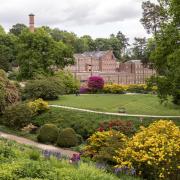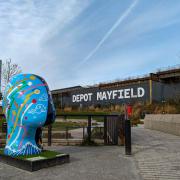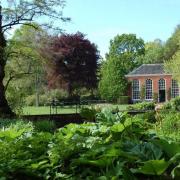Cheshire is home to a few strategic fortresses due to its proximity to the Welsh border, but some castles in the county aren't quite what they seem.
Beeston Castle
Beeston Castle is the remains of a 13th-century fortress rising almost 500 feet vertically from the green pastures of the flat Cheshire Plain. Spectacular views abound from the Inner Bailey - indeed it is possible to see a total of eight counties from here on a clear day. Originally a Bronze Age hill fort some 4000 years ago, this site has been garrisoned on and off right up until its final sacking by Parliamentarian troops in 1645 during the English Civil War.
The castle in its present form was built by Ranulf de Blunderville III, 6th Earl of Chester in 1225, imitating many he had heard about in the Holy Land Crusades. Improvements by Edward I some 50 years later saw the complex strengthened and used as a line of defence for the war in the Welsh Borders. It is now a major tourist attraction due to its unparalleled views as far afield as the Pennines and the Welsh mountains, and a 40-acre woodland park. www.english-heritage.org.uk/visit/places/beeston-castle-and-woodland-park
Chester Castle
Originally dating from the 11th century (and almost certainly there was an earlier Saxon stronghold here before then), the castle was built by Hugh Lupus, 1st Earl of Chester. Today little remains of that structure or the changes occurring until the mid-18th century when renowned architect Thomas Harrison was tasked with rebuilding most of it. Secret Chester tours run guided tours that include a visit to the Castle and Agricola Tower. www.english-heritage.org.uk/visit/places/chester-castle-agricola-tower-and-castle-walls/history
Cholmondeley Castle
Gothic looking Cholmondeley Castle and estate belongs to one of the oldest families in the county. Pronounced Chum-lee, the Cholmondeley family has been in residence here since the 12th century and the estate has passed through the family for over 800 years. Most of the castle was designed by the 1st Marquess of Cholmondeley himself and was built from locally quarried sandstone between 1801 and 1804. It replaced an earlier hall built in 1571.
The final touches, including the castellated battlements, were added on and off in the ensuing 20 years culminating in the impressive structure we see today. Deliberately built on the crest of a hill, the castle enjoys uninterrupted views over its 800 acres of exquisite parkland. As well as the beautiful walks and trails and animals on site that attract thousands of visitors every year, Cholmondeley is the venue to dozens of popular events throughout the year, including the popular Pageant of Power. www.cholmondeleycastle.com
Peckforton Castle
Medieval in style, a casual observer would be forgiven for assigning a 12th - 13th-century date to its construction but remarkably the castle dates only from the Victorian era. Constructed between 1844 and 1851 by Member of Parliament John (later 1st Baron) Tollemache as his own gentleman's residence, it was designed by Anthony Salvin who previously restored the White Tower of London and Windsor Castle.
Peckforton was built from the rock upon which it stands, quarried from less than a mile away and painstakingly transported up temporary tramways to its hilltop location. The modern-day Peckforton is one of the most visited leisure and hospitality venues in the county, with award-winning spa and restaurant facilities. www.peckfortoncastle.co.uk
Mow Cop
Mow Cop sits on the border with Staffordshire. Here at over 1000 feet above sea level Mow Cop castle is again not all it seems. Although it has the air of a grand castle, it is a folly, constructed as a summerhouse in 1754 by the Baker-Wilbraham family of nearby Rode Hall, it was one of the very first English follies ever to be built. Cleverly devised by its architect, this sandstone structure is a delight to behold each evening when illuminated by the final rays of sunset. www.nationaltrust.org.uk/little-moreton-hall/things-to-see-and-do/page-2



























